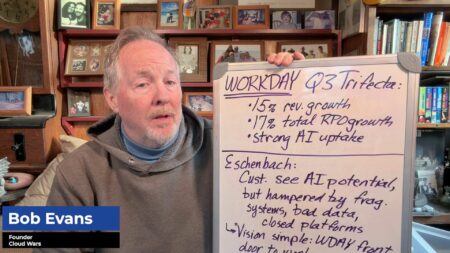There are few things more challenging for C-Level executives than strategy execution. Strategic ideas that appear so straightforward when laid out on a whiteboard or presented in a board room, can quickly become confusing when you shift into execution mode. Add in the accelerating pace of change and you can see why the process of identifying a clear, achievable strategy and successfully operationalizing it is increasingly difficult to do today. There are frameworks however that can increase your odds of success. Here are three you should consider adding to your strategic planning process:
1. Strategy As Resource Allocation
Gartner Research shows that the typical company has undertaken five major strategic initiatives over the last 3 years and 50% of these initiatives failed. A major reason for the failures is poor resource planning. In its most basic form, strategy is simply resource allocation. How should you allocate resources to give you the best possible return?
Take the 3 main business drivers that often serve as the foundation for strategic projects:
- Growth in new customers
- Growth with existing customers and
- Improving efficiency.
While almost every executive is focused on all of these growth goals, many leaders miss the critical step of defining the resources required to successfully execute each of these objectives. In my experience as a turn-around and change management leader, I regularly see well-intentioned strategic growth initiatives, where executives have spread resources evenly across multiple projects, resulting in a sub-scale approach that is doomed to failure. To successfully execute your strategy you need to assure that you’ve done the 2nd level thinking on the people, technology, financial, and time resources required for each strategic objective.
2. What Does the Data Show?
The second point of failure in strategy implementation is the lack of data. More specifically, the lack of ability to define, measure and manage the metrics that matter. We think we use data to make informed decisions when the reality is all too often we use data to rationalize the decisions we make. For any strategic or change initiative, you need to determine the core metrics you will measure and manage.
Many times a strategy fails because business leaders measure the wrong data. Worse yet, many executives default to measuring vanity metrics that are easily achievable or to opinion masquerading as data.
A good framework to use to define the metrics that matter is the flywheel model; measure specific data that is directly tied to how your company makes money. If you find that a new strategic concept doesn’t have a clear connection to how your company makes or could make money, it’s likely a bad idea. This leads us to our third framework for successfully operationalizing strategy: Culture.
3. Drucker Was Right
Peter Drucker, the legendary management consultant, and author, famously noted: “Culture eats strategy for breakfast”. Every experienced executive, in every industry, knows how right he was. Whether you’re a leader who has grown within the same company over the course of many years, or a member of a new leadership team brought in to effect change as part of a new strategy, cultural understanding will be key to your success.
In my career in helping to lead business turnaround and change management, I’ve seen more serious mistakes made by misreading or ignoring the culture of an organization, than any other misstep. There is a massive volume of business literature on the topic of culture and you’ve likely read much of it, or perhaps brought in consultants to help shape the company mission, vision, and the core values that define your culture.
While these all have merit, what I’m talking about here is a much more basic understanding of culture; how things get done, how people work together, and the common goals and incentives the organization shares. All companies have a clear org chart, with roles and responsibilities, but they also have ways to get things done, that may or may not follow the management structure. A strategy that doesn’t take into account how the culture of a company actually functions will not be successful.
This post is by no means an exhaustive treatise on how to turn strategy into execution. My goal was to share 3 foundational frameworks, to inform your strategic planning and help you bridge the gap between strategy and successful execution. I look forward to hearing from you about your experiences in turning strategy into execution.
Want more tech insights for the top execs? Visit the Leadership channel:










